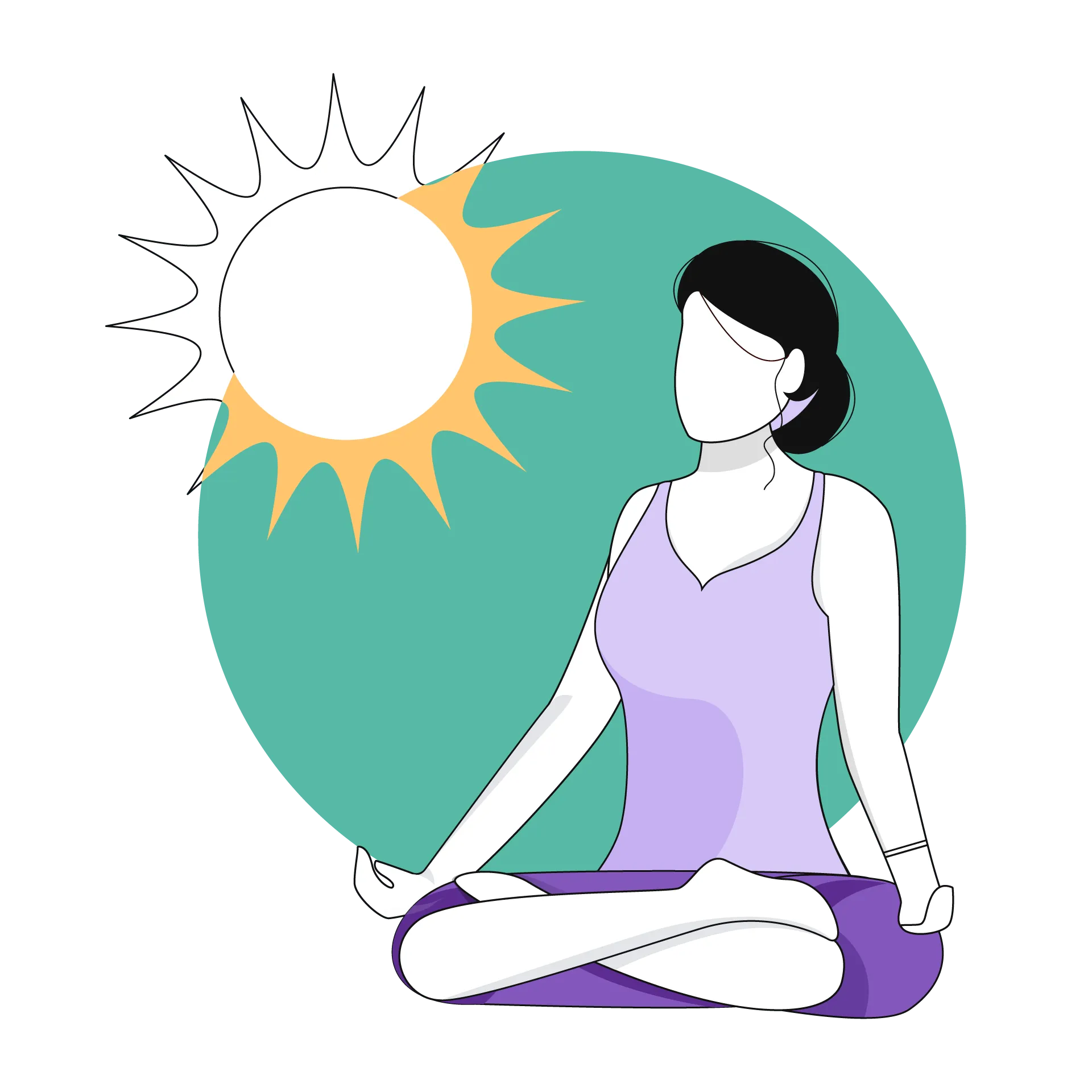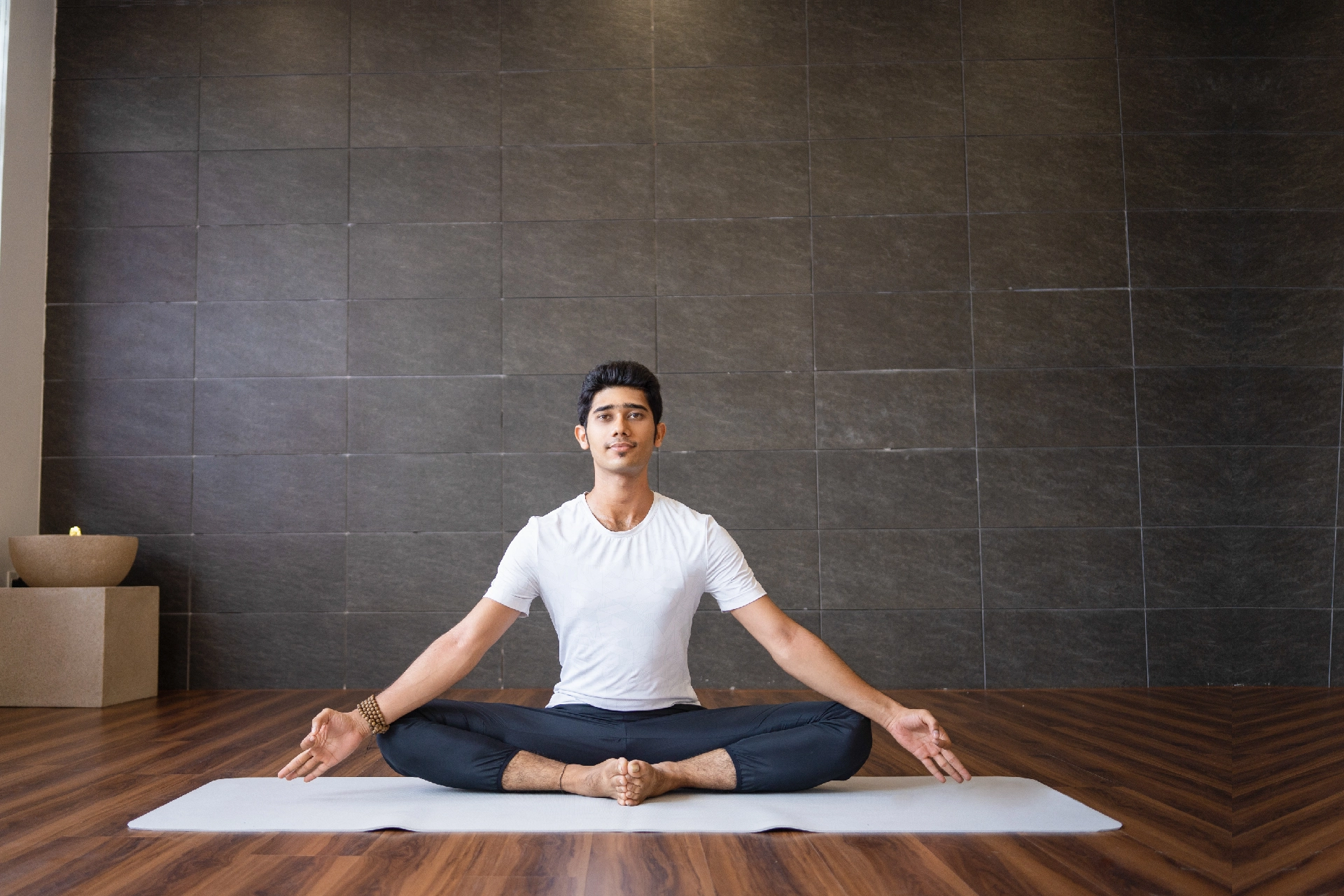Physiotherapist | 4 min read
Kapalbhati: Benefits, How to Do It, Tips and Precautions
Medically reviewed by
Table of Content
Key Takeaways
- Kapalbhati pranayama is an ideal breathing exercise for lungs
- Follow proper kapalbhati steps to enjoy kapalbhati benefits
- Kapalbhati pranayama benefits your mental and physical health
Do you know there are three main doshas that play vital roles in your mental, physiological and emotional health? Well, according to Ayurveda, a combination of five main universal elements gives rise to vata, kapha and pitta doshas. Of these, you can attribute kapha to the spring season. This season is characterized by stable, heavy, slow, cold and heavy conditions [1]. Practicing kapalbhati benefits your body by keeping you alert and warm. Not only does it improve your respiratory functions but also boosts your mental health [2].
To remove lethargy and sluggishness during spring season, you may practice breathing exercises. When you think about exercise for lungs, one of the most effective ones is kapalbhati.
Read on to gain more insight on kapalbhati pranayama benefits.
What is Kapalbhati Yoga?
There are numerous benefits of yoga. Whether it is yoga for cholesterol improvement, yoga for PCOS or yoga for immunity, you can find every possible solution by practicing asanas. One such breathing practice in yoga is kapalbhati. This practice gets its name from ‘Kapal’ that means skull and ‘bhati,’ which means to shine.
Kapalbhati benefits your body by cleansing your abdominal organs and energizing your nervous and circulatory systems. In this technique, you inhale and exhale forcefully through nostrils in short bursts. As a result, your sinuses, nasal tract, mind and lungs become clear. Practicing it during the spring season helps balance the rising Kapha dosha especially if your mind is foggy and you have nasal congestion.
Additional Read: Exercise for lungs
Benefits of Kapalbhati Pranayama
Here are some of the most important benefits you should know:
- Helps reduce carbon dioxide levels in your blood
- Enhances oxygen levels in the body
- Improves the capacity of the lungs
- Strengthens the functioning of your lungs
- Removes waste substances and toxins from your body
- Helps improve blood circulation because of the active inhalation and exhalation processes
- Increases pitta that aids in weight loss as metabolic rate of your body increases
- Improves concentration and memory by activating your brain cells
- Makes your skin glow by improving your skin health
- Helps cure disorders like insomnia, sinus and asthma
- Uplifts your mood and fills you with positivity by boosting endorphin production
- Aids in digestion by eliminating gastric problems
- Relieves problems like constipation and heartburn Improves your hair growth
- Enhances the functioning of kidneys and liver
- Eliminates premature signs of aging and dark circles under your eyes
Steps to do Kapalbhati Yoga
Follow these simple kapalbhati steps to improve your mental and physical health.
- Step 1: Make sure to practice it in a quiet and peaceful environment
- Step 2: Sit in a comfortable pose on a yoga mat
- Step 3: Keep your hands facing upwards on knees
- Step 4: Fold index fingers of both your hands
- Step 5: Ensure that tips of your thumb and hands touch each other
- Step 6: Keep your eyes closed and your head and back straight
- Step 7: Keep your shoulders relaxed
- Step 8: Do a deep inhalation through both nostrils
- Step 9: Focus on your belly area when doing so
- Step 10: Try pulling your navel back so that it touches your spine
- Step 11: Exhale in the form of light outbursts when doing so
- Step 12: Try exhaling fast as you pull stomach inwards
- Step 13: Note that during inhalation stomach will come outwards
- Step 14: During exhalation, stomach should move inwards
- Step 15: Practice this for 20 breaths to complete one cycle
You may repeat this breathing practice four to five cycles daily. Do not forget that your main focus should be on the exhalation process. Practice continuously for your exhalation and inhalation to become smooth.
Additional Read: Yoga for EyesCan Everyone Practice Kapalbhati?
Under following circumstances, it is better to avoid this breathing practice [3].
- If you have an artificial pacemaker
- If you have recently had an abdominal surgery
- If you have delivered recently
- If you have heart problems or hypertension
- If you are facing conditions like epilepsy, hernia or slip disc
There are umpteen benefits of practicing this breathing technique. If you already have health ailments, consult a doctor before starting the practice. It is always advisable to start kapalbhati under the guidance of a yoga expert. Connect to top naturopaths and ayurvedic specialists on Bajaj Finserv Health and clear your doubts. Book an appointment with a doctor of your choice and address your health symptoms right away!
References
- https://kripalu.org/resources/stir-prana-kapalabhati-kapha-balancing-spring
- http://www.ijpbr.in/index.php/IJPBR/article/view/718
- https://www.artofliving.org/in-en/yoga/breathing-techniques/skull-shining-breath-kapal-bhati
Disclaimer
Please note that this article is solely meant for informational purposes and Bajaj Finserv Health Limited (“BFHL”) does not shoulder any responsibility of the views/advice/information expressed/given by the writer/reviewer/originator. This article should not be considered as a substitute for any medical advice, diagnosis or treatment. Always consult with your trusted physician/qualified healthcare professional to evaluate your medical condition. The above article has been reviewed by a qualified doctor and BFHL is not responsible for any damages for any information or services provided by any third party.






